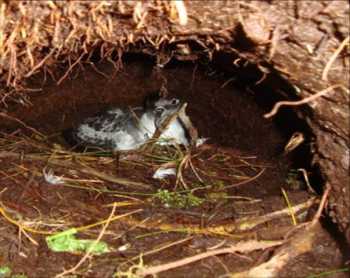Richard Cuthbert (Royal Society for the Protection of Birds, UK) and colleagues have written in the journal Bird Conservation International on the plight of a suite of burrowing petrels on Gough Island in the South Atlantic thought due to the introduced House Mice Mus musculus. One of the affected species is the ACAP-listed Grey Petrel Procellaria cinerea.
The paper’s abstract follows:
“The predatory behaviour of introduced house mice Mus musculus at Gough Island is known to impact on albatross and petrels, resulting in the Tristan Albatross Diomedea dabbenena and Atlantic Petrel Pterodroma incerta being listed as “Critically Endangered” and “Endangered”, respectively. Although predation has been documented for two burrowing petrels and one albatross species, the impact of house mice on other burrowing petrels on Gough Island is unknown. We report burrow occupancy and breeding success of Atlantic Petrels, Soft-plumaged Petrels Pterodroma mollis, Broad-billed Prions Pachyptila vittata, Grey Petrels Procellaria cinerea and Great Shearwaters Puffinus gravis. With the exception of the Great Shearwater, breeding parameters of burrowing petrels at Gough Island were very poor, with low burrow occupancy (range 4–42%) and low breeding success (0–44%) for four species, and high rates of chick mortality in Atlantic Petrel burrows. Breeding success decreased with mass, suggesting that smaller species are hardest hit, and winter-breeding species had lower breeding success than summer breeders. The results indicate that introduced house mice are having a detrimental impact on a wider range of species than previously recorded and are likely to be causing population declines among most burrowing petrels on Gough Island. The very low values of burrow occupancy recorded for Soft-plumaged Petrels and Broad-billed Prions and greatly reduced abundance of burrowing petrels in comparison to earlier decades indicate that Gough Island’s formerly abundant petrel populations are greatly threatened by the impact of predatory house mice which can only be halted by the eradication of this species from the island.”

A Grey Petrel in its burrow on Gough Island
Photograph by Kalinka Rexer-Huber
Reference:
Cuthbert, R.J., Louw, H., Lurling, J., Parker, G., Rexer-Huber, K., Sommer, E., Visser, P. & Ryan, P.G. 2013. Low burrow occupancy and breeding success of burrowing petrels at Gough Island: a consequence of mouse predation. Bird Conservation International doi.org/10.1017/S0959270912000494.

 English
English  Français
Français  Español
Español